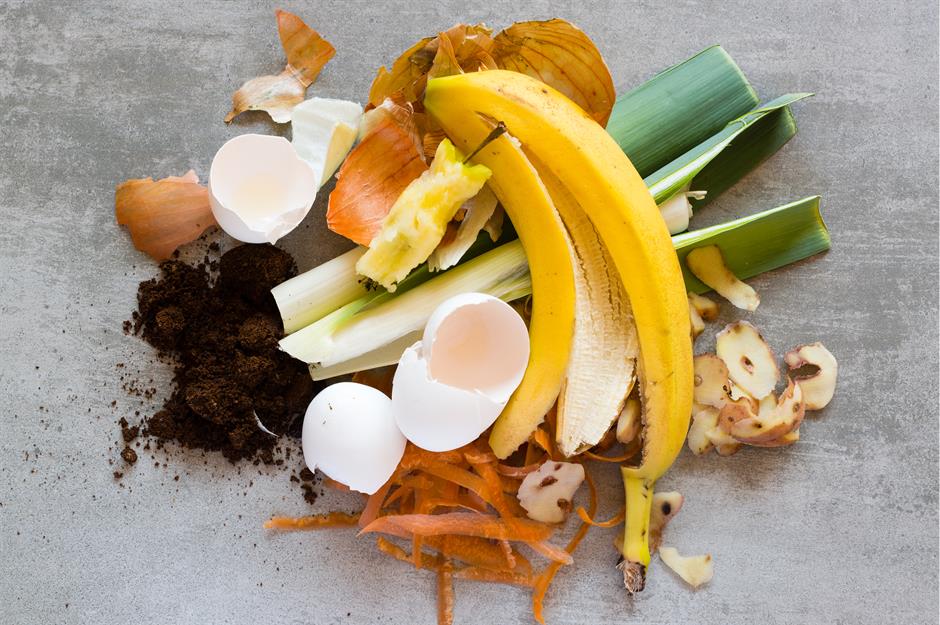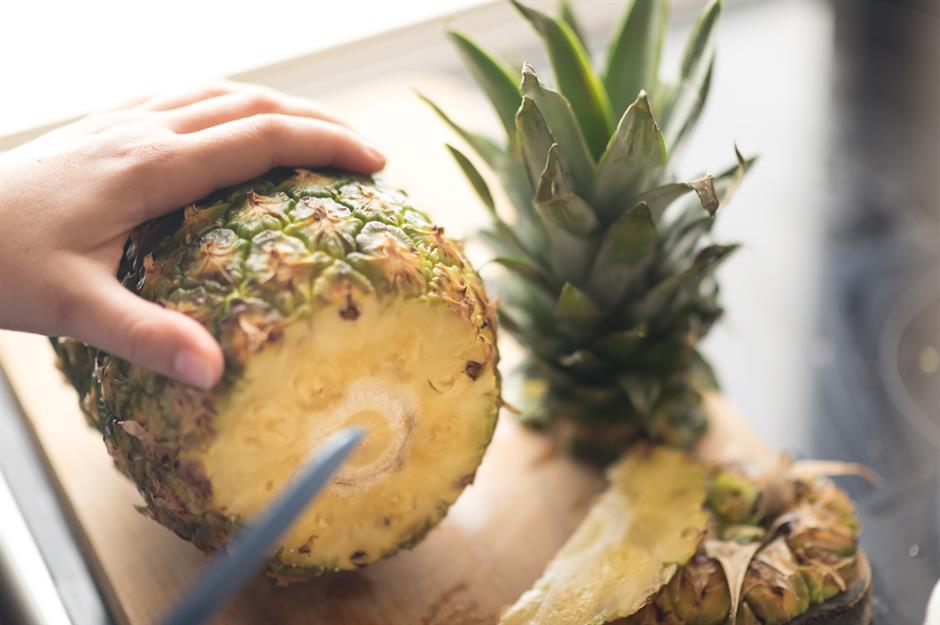22 foods and drinks you shouldn't throw away but do
You won't throw away leftovers again
These common leftovers are often discarded but you could be throwing away nutritional goodness, natural remedies and even cleaning products. Click through to see the food and drink scraps you could be reusing.
Pineapple core
The core of a pineapple is high in bromelain (‘nature’s aspirin’) which can reduce and inflammation. There’s also plenty of fiber, vitamins and minerals. The core can be a bit hard and unappetizing so you can stick it in a blender for a smoothie or boil it to reduce it to stock.
Celery leaves
The leafy green tops of celery sticks are a goldmine for health benefits. They are low in calories but high in vitamins (K, C, B6 and A), minerals and fiber.
Corn silk
Corn silk – the fine threads on corn on the cob – can be made into tea which is thought to treat an array of health issues. Most commonly, corn silk is used to treat urinary tract infections due to its properties as a diuretic.
Chicken bones
Instead of being discarded, chicken bones can be boiled and used to make a stock. Sometimes known as ‘broth’, stock has many health benefits and boosts to the immune system and improves digestion.
Pickle juice
Although good to throw down the sink due to its cleaning properties, pickle juice can be helpful in various ways. The vinegar in pickle juice can help cool sunburn and remove the stinging sensation from the affected area when pressed there as well as soothing aching joints and muscles. Pickle juice is also apparently a great hangover cure.
Strawberry leaves
The leaves of strawberries can be brewed in tea and used to alleviate gastrointestinal problems such as a stomach ache as well as helping to improve digestion. They can also reduce pain and inflammation of joints as they're a diuretic, which helps the body drain out excess water.
Watermelon seeds
Who knew? The seeds inside the watermelon that we all spit out are actually full of nutrition; in fact, they're one of the most nutrient-dense seeds. Once seeds have been sprouted, dried and shelled, 100 grams of seeds give you 34g of protein as well as magnesium and help strengthen your bones. The rind of watermelon can be used to improve blood flow as it's high in citrulline.
Onion skins
After peeling an onion (and drying your eyes), the onion skins very often end up in the bin. However, they're high in antioxidants, high in quercetin – which can help prevent arterial plaque and high blood pressure –and high in fibre. Extract the benefits by adding the peels to soups, sauces, stews, broths and stocks while cooking then discard before eating.
Pumpkin seeds
Pumpkin seeds are high in magnesium which is important for bone density, heart health and an array of other things. Seeds can also be used as a cure for insomnia because they contain tryptophan which the body converts into melatonin, potentially triggering sleep.
Sour milk
If you are a cheese-lover, instead of throwing sour milk away you can use it to make cottage cheese. All you need is to add vinegar to the heated soured milk and homogenize the liquid as you normally would to make cheese. Once the curds are separated, rinse through a colander. If using sour milk to cook sounds unappealing, pouring it onto flowerbeds in the garden gives the earth more calcium to grow.
Banana skins
Like pumpkin seeds, banana peels can aid sleep as they contain high levels of tryptophan. However, if eating banana skins seems less than appealing, they can act as a moisturizer and be rubbed on spots and burns to help the healing. No preparation is required for this either, just remove the fruit from its skin and keep the peel in its natural form.
Broccoli stems and cauliflower stalks
Both broccoli stems and cauliflower stalks are as good for us as the florets, and yet many discard the stems. They are high in protein, sodium, magnesium, potassium, calcium, and Vitamin A. Use a peeler to remove the tough, leathery skin on the stalks then cook with the florets.
Orange peel
Feeling anxious or depressed? Give your orange peels a squeeze and sniff – the oils in oranges are reported to be a relaxant and are also used to settle upset stomachs and fight oncoming colds. Dried orange peels can be used as fire starters, with the added benefit of releasing a lovely citrus scent as they burn.
Lemon peel
Lemon peels can be a great source of flavor for both food and drink. You can also use them to make a cleaning vinegar to help clean your household appliances or rub lemon peels on coffee stains to remove them from mugs.
Eggshells
Calcium- rich eggshells are a tasty treat for our canine friends. Dogs love eggshells – they can be served whole (with or without the accompanying white and yolk) or ground up in a coffee grinder and sprinkled over their food – and they're an excellent source of calcium for them. In terms of human consumption, evidently eggshell toothpaste can be a perfect way to replenish the enamel worn away over time and even whiten teeth. Or use them, ground up, in a garden to protect your plants from slugs.
Stale bread
Stale bread can be torn into cubes, drizzled with oil and then put in an oven to make croutons. Croutons can be a great addition to salad and soups as well as a quick snack on their own. Stale bread can also be used to make a variety of stuffings as well as breadcrumbs which can be used to sprinkle over casseroles, pastas and baked chicken for an added crunch. Just whizz the stale bread in a food processor and store in a sealed bag in the freezer for whenever you need more.
Potato skins
Potato skins are often served as starters in restaurants with an array of dips but most people dispose of them at home after peeling potatoes. Potato skins have plenty of fiber, nutrients, protein, iron and potassium packed within them. So next time, think before you peel.
Lettuce
The stem of the lettuce can be used to grow more lettuce if it is cared for properly. After eating the leaves, the chopped down stem can be placed in a small amount of fresh water, directly in the sunlight. The heart of the lettuce will begin to sprout new leaves after a few days and then transferred to soil to grow into a whole new lettuce.
Avocado
If you find your avocado is too big to eat, don’t just throw the rest away. Ripe and ripening avocado can be used for a hair mask by mashing it up with olive oil and leaving in your hair for 10-15 minutes before washing to make your hair appear shinier.
Wine
If you’re faced with an abundance of leftover wine or even corked wine, you can use it to make a vinegar instead of throwing it down the sink. Simply pour it into a jar, cover it and put it in a dark place for a couple of months. In the winter, leftover wine can be mulled for drinking. Alternatively, pour it into an ice cube tray, freeze it, then keep in the freezer until you need a splash or two when cooking.
Cola
If you purchased too much cola or have left cola to go flat, you can use it to make a smoky barbecue sauce rather than just pour it down the drain. The color of the cola gives the dark texture to the sauce while the sugar in the drink will caramelize when grilled. Add cola to a pan along with ketchup, garlic, vinegar, chilli powder and whatever else you like in your barbecue sauce, then simmer until the liquid has thickened.
Coffee grounds
Coffee grounds make some of the best compost for your garden or potted plants. They help lower the pH level of your soil if sprinkle some in the holes when planting acidic soil-loving plants. If you don't have a garden, use the grinds as an all natural body and face scrub.

